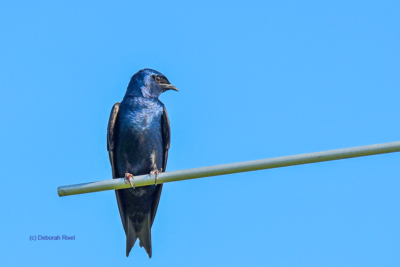
In late spring, Purple Martins nest mostly east of the Rockies in the US and Canada, and then take off for Brazil for the winter. Scientists estimate that in late winter/early spring, about 1.5 million martins flock to Comaru – a tiny island located in the Amazon. There, they spend a couple of weeks roosting with their fellow compatriots, then start their long-haul flight northward. This migratory staging area is a boon to scientists who have been unable to piece together what the birds do during the year and why they are experiencing rapid declines. Already they are beginning to get a more accurate picture.
One of the issues affecting these birds roosting in the Amazon may be the ingestion of mercury from mining operations. Birds with a build-up of this heavy metal make it difficult for them to store fat and their ability to migrate and breed is compromised. There are also other concerns with Purple Martins including exposure to high levels of light at night. One study showed that because it is believed martins are cued to migrate by light, too much light at night experienced by martins who are overwintering near cities and towns may cause them to migrate north a week or more early. This can be fatal, as if they arrive before the insects they need to build back their strength after migration are not there, the birds can starve. For more information on Purple Martins and the challenges they are facing, check out this article in Smithsonian; for more info on the research being done at this staging area in the Amazon, check out this Audubon article.